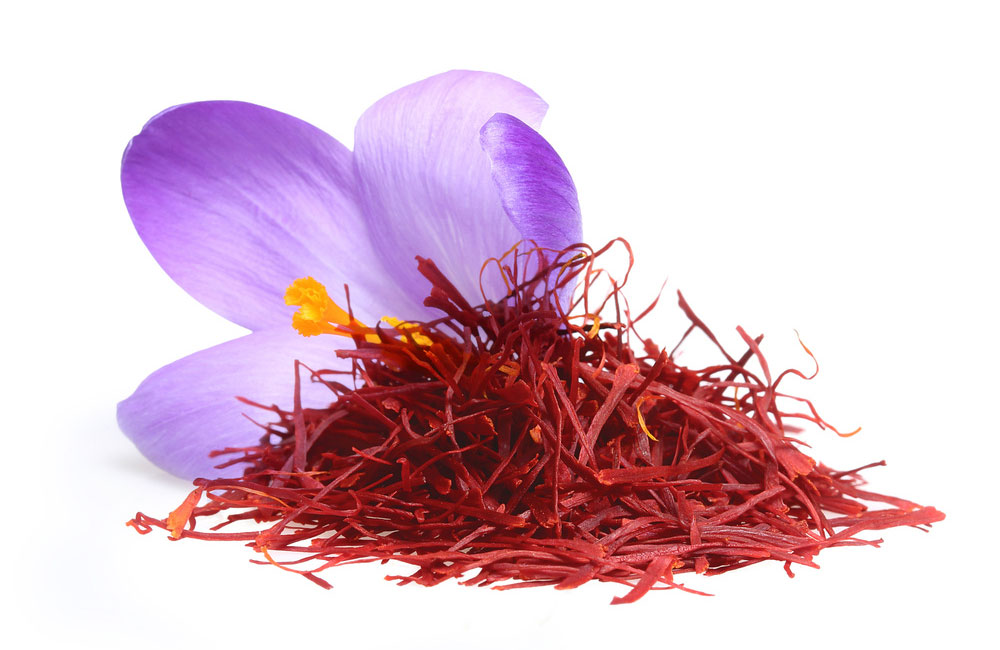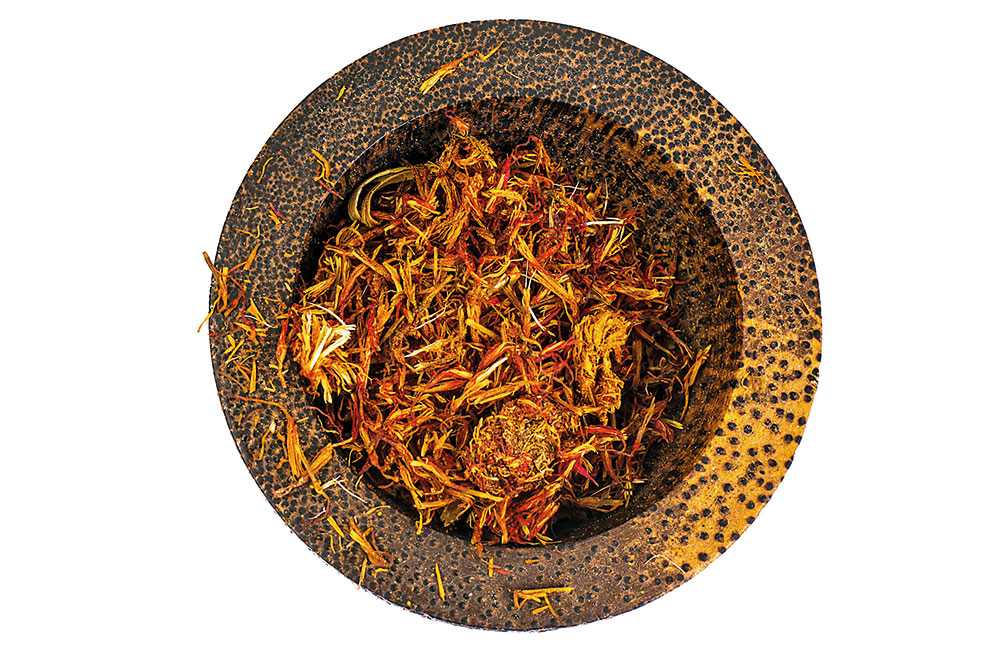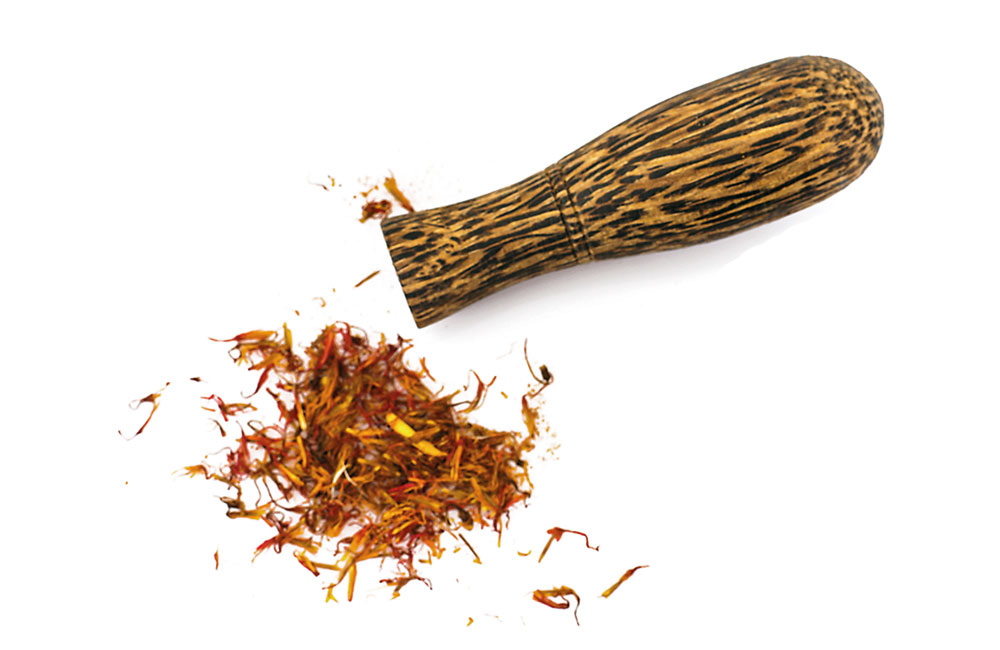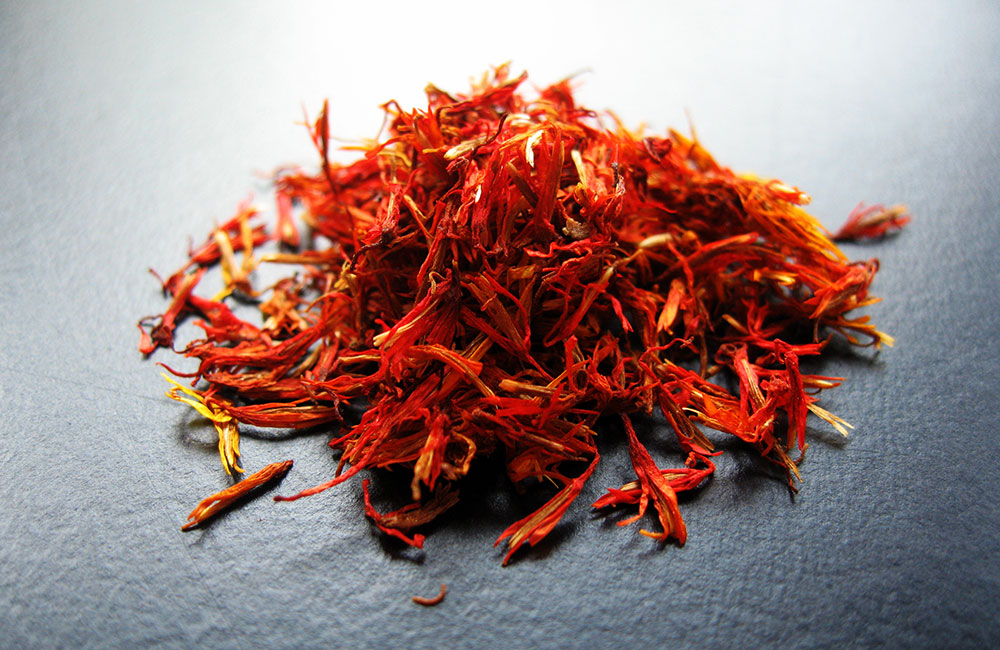
WHAT IS SAFFRON?
Saffron is the purple-flowered saffron crocus, Crocus Sativus, a bulbous perennial of the iris family (Iridaceae). The saffron flower is composed of six purple petals, three golden yellow stamens and one red pistil, which is the female sex organ of the plant. It is this pistil made up of three stigmas (filaments) which when dried up gives the spice saffron. Crocus Sativus has a reversed vegetation cycle, which means that the leaves come out in September and the plant flowers in October then dries up the following May. Saffron can be grown easily.
WHY SO EXPENSIVE?
Saffron cultivation is relatively simple, but the real difficulty is the intense labor needed to harvest the plant. Only a small amount of each saffron flower is used, and all harvesting must be done by hand, at a speed, since after blossoming at dawn, flowers quickly wilt. All plants bloom within a window of one or two weeks. Stigmas are dried quickly upon extraction and preferably sealed in airtight containers. Around 150,000 saffron flowers are needed to harvest one kilo of stigmas and around 5 kilos of stigmas are needed to make one kilo of dried saffron.


SAFFRON GRADES
Saffron is not all of the same quality and strength. One major criterion in grading saffron is based on how the saffron is picked. Saffron from Iran, Spain and Kashmir is classified into various grades according to the relative amounts of red stigma and yellow style (slender stalk that connects the stigma together with the ovary) it contains. The more the amount of style included in saffron the less strong it is gram for gram, because the color and flavor are concentrated in the red stigma.
ISO CERTIFIED
Saffron may be categorized under the international standard ISO 3632 after laboratory measurement of crocin (responsible for saffron color), picrocrocin (taste), and safranal (fragrance or aroma) content. Despite all attempts for quality control, falsification is extensively practiced. Typical methods include mixing in substances like red-dyed silk fibers, or the saffron tasteless and odorless yellow stamens. Other methods include dousing saffron fibers with viscid substances like honey or vegetable oil to increase their weight. Powdered saffron is more prone to falsification.








